This previously classified film provides a new and fascinating glimpse into the 50-megaton Cold War nuclear test that occurred nearly six decades ago.
BY: THOMAS NEWDICK | thedrive.com
The colossal Ivan device was developed under a program known as izdeliye 202 (meaning “product 202”, otherwise known simply as “V”). Years later, when more details became known about it in the West, the weapon would be dubbed “Tsar Bomba.”
On August 20, 2020, the Rosatom State Atomic Energy Corporation — the Russian state concern responsible for nuclear enterprises, including nuclear weapons — released a 30-minute documentary film on its official YouTube channel showing the test in unprecedented detail, from the initial transport of the device itself to the mushroom cloud that later rose some 6.2 miles over the Arctic archipelago. The release of the film coincides with the 75th anniversary of Russia’s nuclear industry — although a thermonuclear bomb popularly described in the West as a “doomsday weapon” was perhaps an unusual choice for the commemoration. Regardless, it was a remarkable technological achievement.
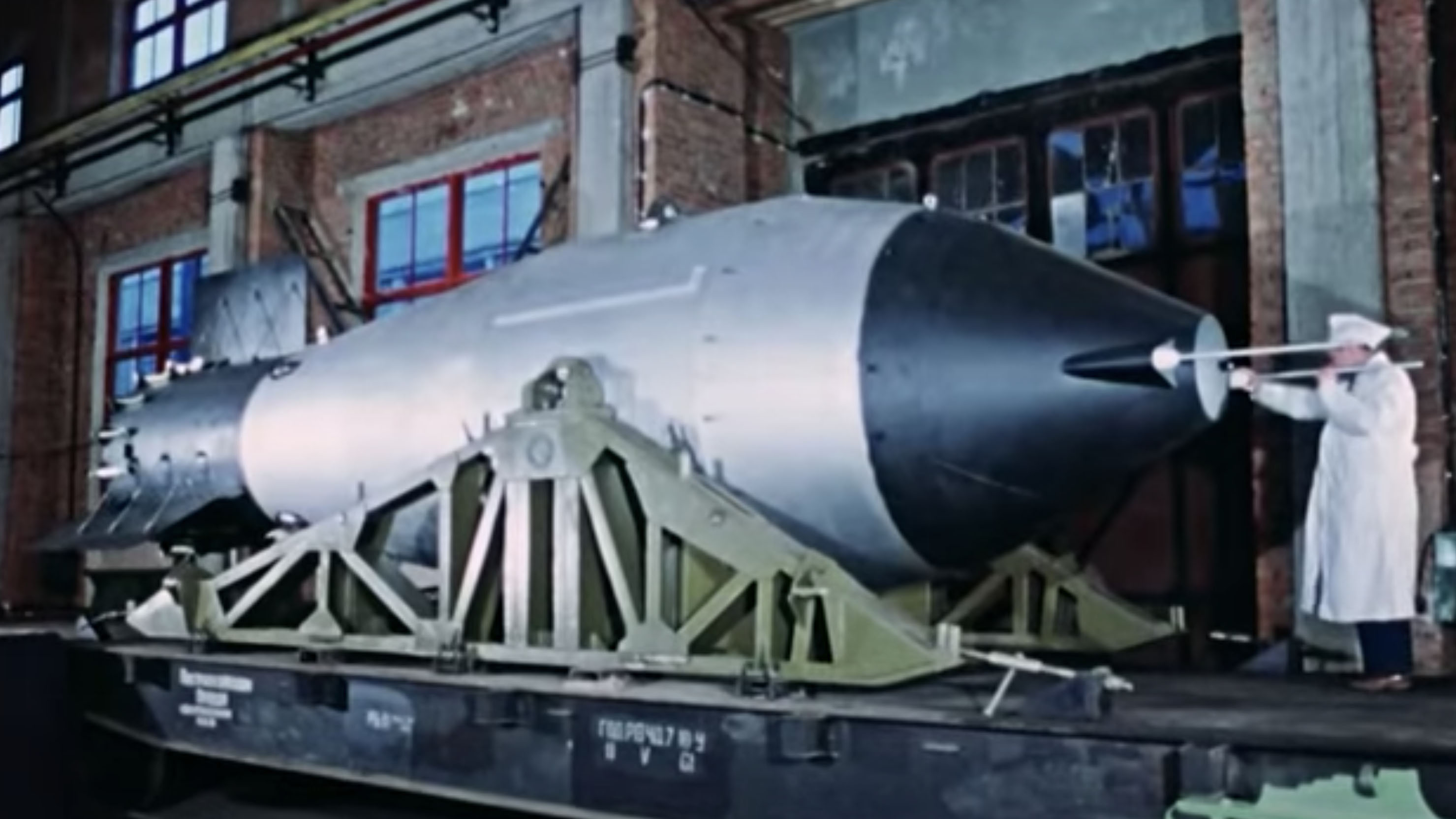
While the style of the documentary is pure Soviet propaganda, it reveals plenty of fascinating details about the test. After the “Top Secret” titles, one anachronistic scene shows the fully assembled Ivan bomb moved at one stage by a steam train. Its destination was Olenya Air Base near Olenegorsk on the Kola Peninsula in northwestern Russia, where the bomb was unloaded and then moved onward by truck. Remarkably, variants of the four-engine Tu-95 Bear bomber, the type that carried the devastating cargo aloft for the flight over the Barents Sea, remain in service today, though in much-modernized form. The particular aircraft used for the October 1961 test was the Tu-95V, a special adaptation of the first-generation Bear-A nuclear bomber, with an enlarged and reinforced bomb bay for semi-recessed weapon carriage. Like many other strategic bombers of its era, the Tu-95V featured an anti-nuclear-flash white scheme, although in this case it was extended to cover the propeller blades, too.
The documentary shows us inside the cockpit of the Tu-95V, where aircrew don protective goggles before we see the 26.5-ton bomb falls away gently under a parachute towards its intended target — the Russian Defense Ministry’s State Testing Site No. 6 — close to Novaya Zemlya’s Matochkin Strait. The detonation itself is recorded from several different aspects, including from the air. The Tu-95V was accompanied for at least some of its mission by at least two other aircraft, including a twin-jet Tu-16 bomber serving as a “flying laboratory,” equipped with cameras, radio-telemetry equipment, oscilloscopes to determine the power of the explosion, and pressure recorders to measure the intensity of the shock wave. Other measuring equipment was installed on the Tu-95V itself, including sensor probes that replaced the usual tail gunner’s position. One scene from the documentary shows a model indicating a formation of five aircraft in total, at least at the start of the mission.
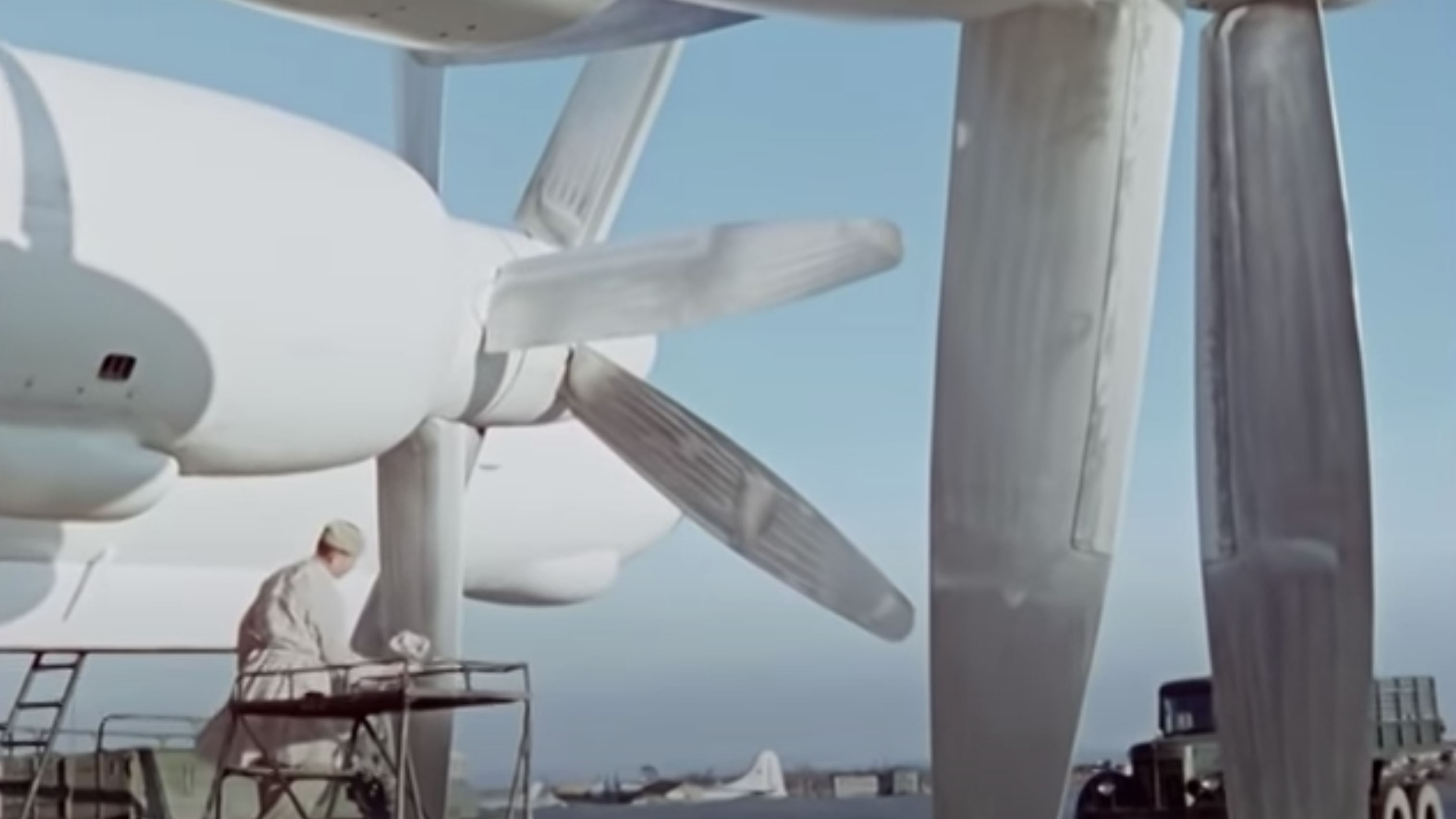
The mission itself was controlled from an underground bunker at Belyusha Bay, 162 miles south of the test site. Closer to the site of the detonation itself was D-8, 56 miles from the test area, which housed further measuring and recording equipment, plus an underground command post, with warships being used as a communications relay between the two stations. State Testing Site No. 6 itself didn’t feature any buildings or vehicles to assess the damage, but was equipped with additional automated testing gear: cameras and filming equipment, and below-ground oscilloscopes.
The bomb was dropped from the Tu-95V flying at an altitude of 34,449 feet, and detonation occurred at 13,123 feet above the ground — an airburst — which would have substantially reduced the radiation produced, and this may be the reason the documentary refers to the weapon as a “clean hydrogen bomb.” But of course, everything is relative when it comes to the world’s most powerful nuclear device.
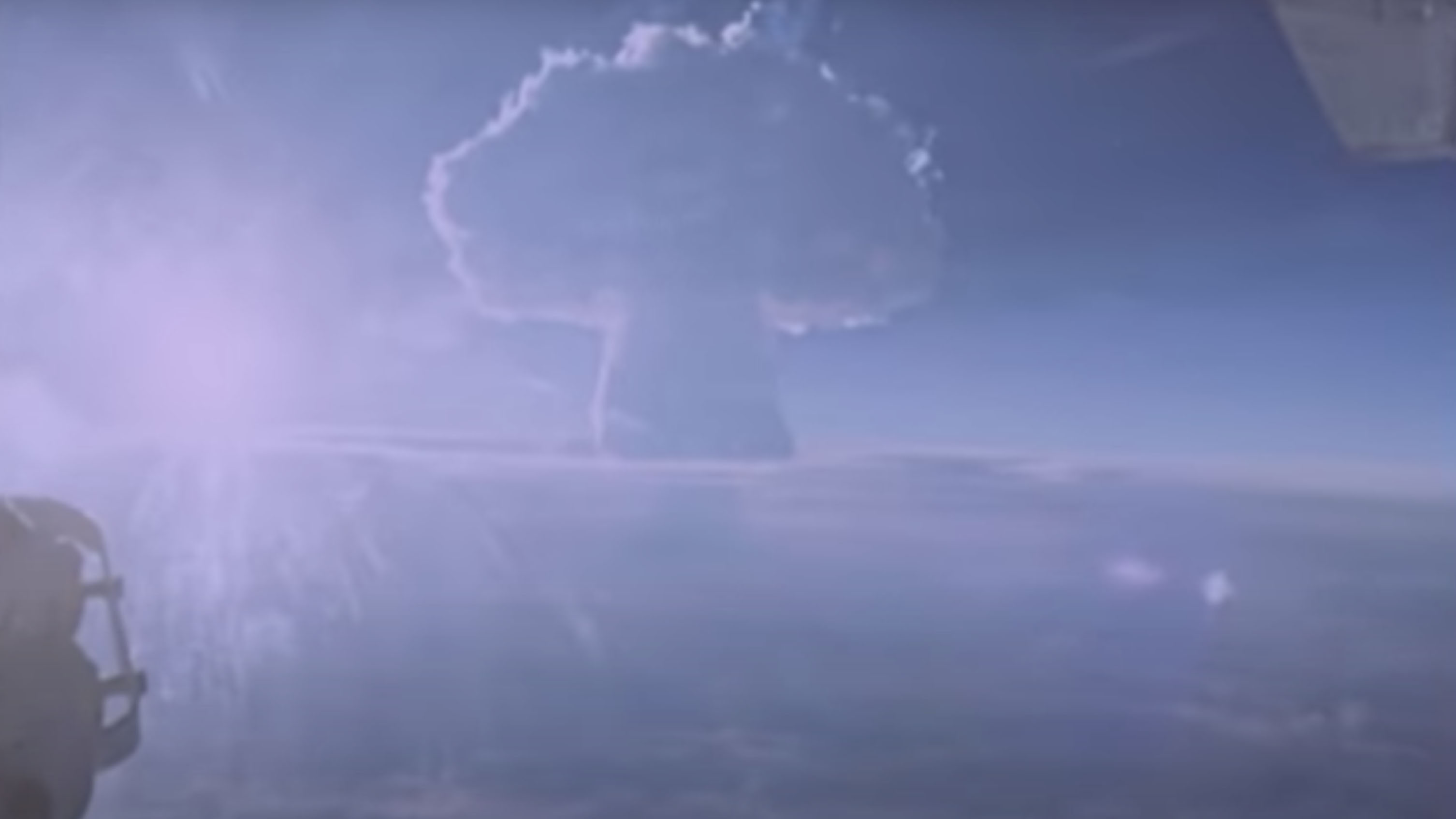
According to the video, the Tu-95V was 28 miles away from the release point, and the detonation produced a fireball visible 621 miles away, despite cloudy conditions. “The explosion was accompanied by a bright flash of unusual strength,” the narrator explains. Within seconds, a column of dust had risen to a height of around 6 miles.
The footage then moves to one of the Tu-16 aircraft, at a distance of 155 miles from the detonation and we see the huge fireball, rising slowly and expanding to reach a maximum of 12 miles across. Forty seconds after the detonation, the fireball has reached a height of approximately 19 miles, after which a mushroom cloud begins to form, reaching a maximum height of 37-40 miles and a diameter of 56 miles.
We see the Tu-95V returning home, with the mushroom cloud still visible at a distance of 497 miles, before we take to the ground “a few hours” after the explosion, to see the destruction wrought on Novaya Zemlya. Scientists are seen arriving onboard a specially-equipped Mi-4 helicopter radiation reconnaissance systems, disembarking unprotected, since “even in the very center of the site, [radiation] was insignificant.” Some of the team then put on protective gear and head by closer to the center of the test site, apparently using a GT-series tracked vehicles designed primarily for operations in snowy conditions. Here, for “dozens of kilometers” in every direction, the earth has been scorched, most of the snow vaporized, and the few structures that existed above the surface have been obliterated.
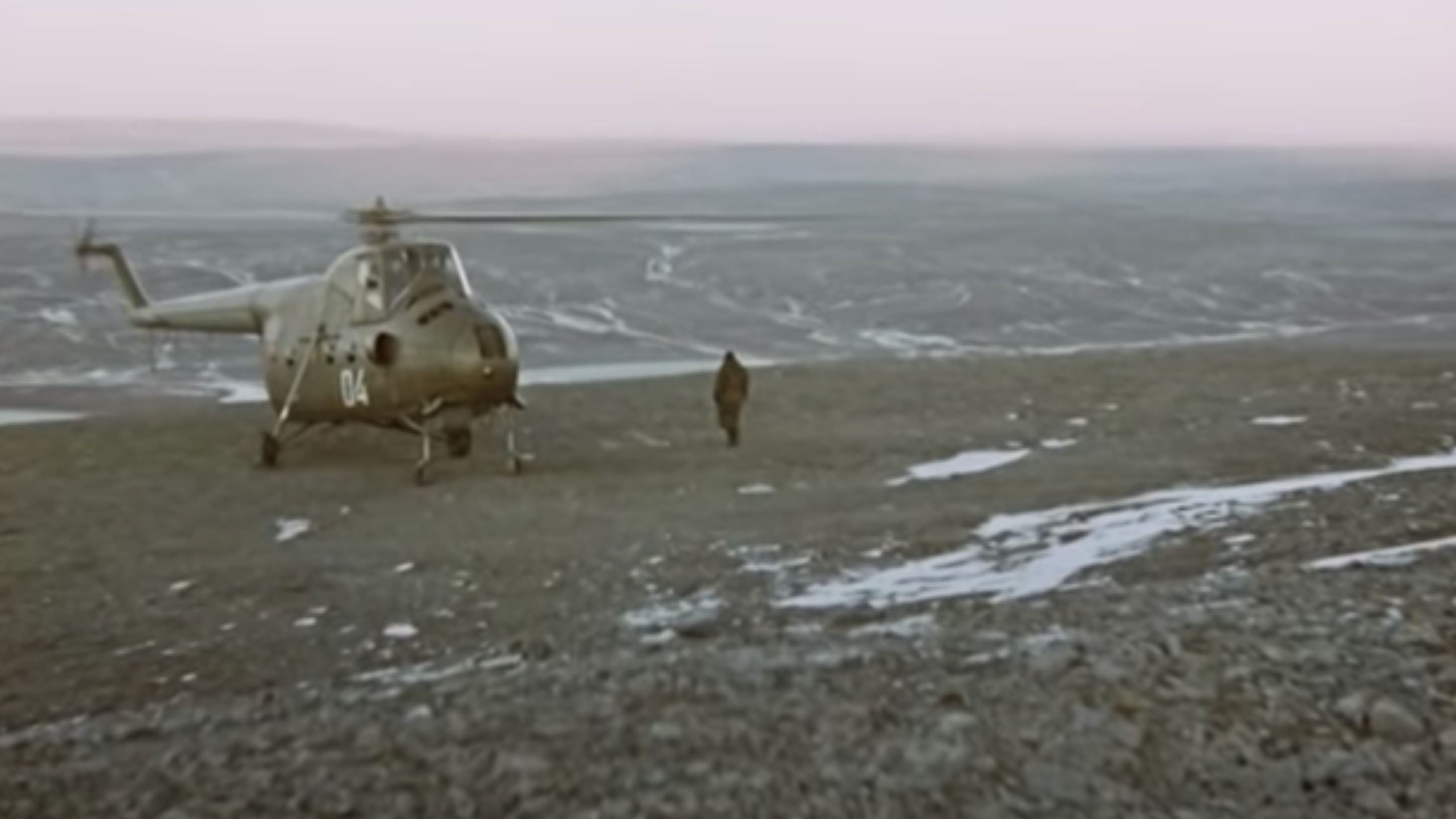
The Soviet Union’s path towards the 50-megaton test of October 1961 had begun with the country’s first nuclear detonation, which took place on August 29, 1949, involving an experimental device known as the RDS-1. This was followed by a first air-delivered bomb, the 30-kiloton RDS-3 Maria, dropped on October 18, 1951, by a specially adapted Tu-4 bomber, itself an unlicensed copy of the B-29 Superfortress.
By 1953, the Soviets had developed nuclear bombs for larger-scale production and was able to field the 30-kiloton RDS-4T Tatyana that could be carried by a twin-engine Il-28 Beagle jet bomber. The same year, the Soviet Union detonated its first thermonuclear bomb, the RDS-6S Sloyka, in a ground test that took place on August 12.
Ivan was the brainchild of Soviet Premier Nikita Khrushchev and was authorized in July 1961 at an especially frosty period in East-West relations that culminated in the Berlin Crisis and the city’s permanent partition by the Berlin Wall.
With typical bombast, Khrushchev had demanded his engineers develop a thermonuclear weapon with an unprecedented yield of 100 megatons, requiring a three-stage warhead, rather than the usual two. It seems the team responsible had concerns about the radiation risk and decided to reduce the yield to 50 megatons — still equivalent to around 3,800
Hiroshima bombs. The documentary notes that the bomb casing itself was sized to carry a 100-megaton charge.
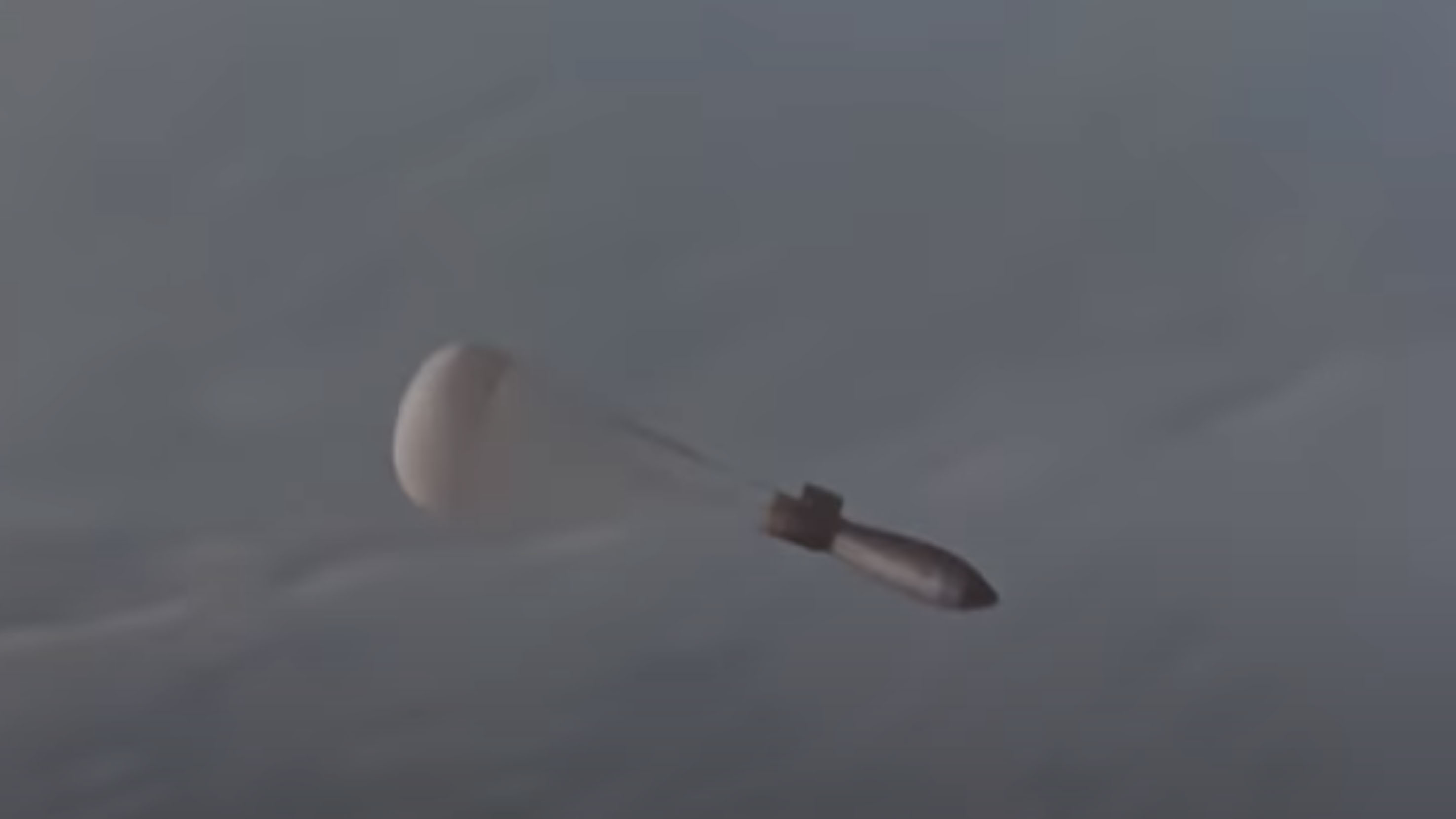
By contrast, the largest nuclear device ever detonated by the United States was the one it set off during the Castle Bravo test at Bikini Atoll in the Marshall Islands in the Pacific on March 1, 1954. Unlike the Soviet test, this yield was achieved by accident, after a miscalculation by the designers. Nevertheless, the yield produced — 15 megatons as opposed to the planned 5-6 megatons — still fell well short of the Ivan test. The Castle Bravo device was mounted in a “shot cab” on an artificial island, rather than being air-dropped, but it was later developed into the Mk 21 bomb that could be carried by a U.S. Air Force B-36 Peacemaker or B-47 Stratojet bomber.
Meanwhile, Ivan’s detonation was destined to be a high watermark in atmospheric nuclear testing. Amid mounting concern about the fallout generated by above-ground tests, the Partial Test Ban Treaty was signed in 1963 by the governments of the Soviet Union, the United Kingdom, and the United States. Thereafter, all tests were required to be conducted underground.
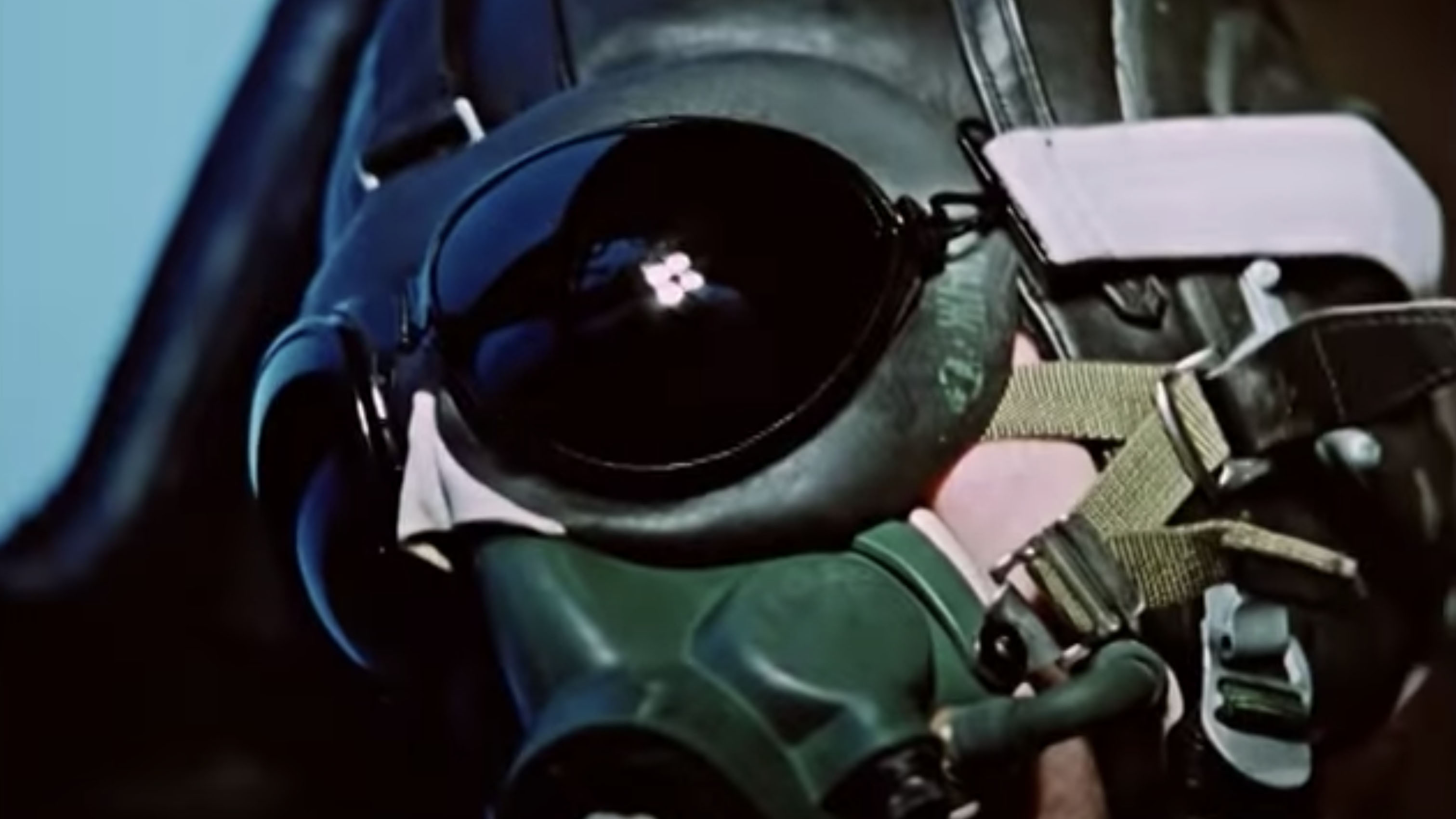
The Ivan bomb was ultimately too large to be of practical military use — both in terms of delivery and finding targets that warranted its use. However, the Soviet Union remained heavily engaged in developing freefall nuclear bombs alongside missiles and other delivery systems.
Nuclear weapons are still assigned considerable importance for today’s Russian armed forces and most Russian combat aircraft are capable of delivering nuclear bombs. While details of modern Russian freefall nuclear bombs remain highly classified, their equivalent practice bombs provide some indication of their appearance and are issued to tactical fixed-wing units for use in exercises. The release of this Cold War-era documentary is a sobering reminder of the lingering presence of these weapons and their awesome destructive power.
